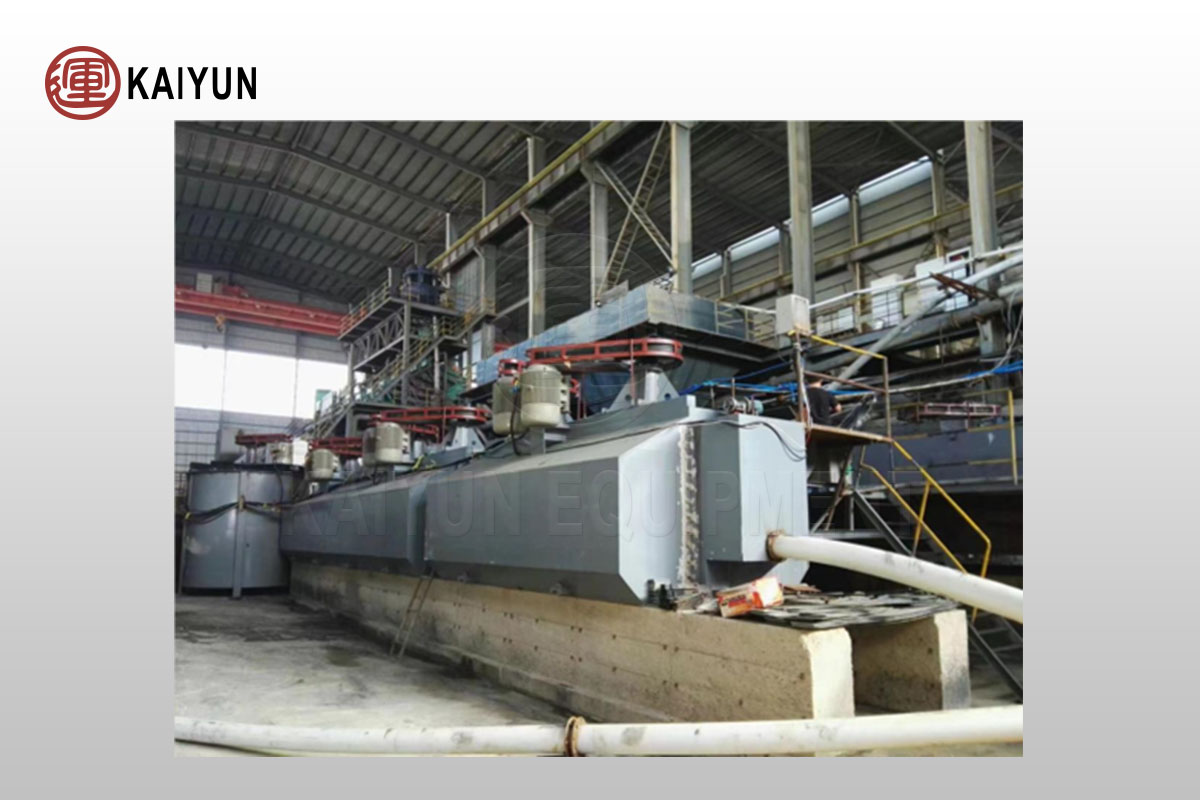Keywords: Copper Flotation, Copper Flotation Process, Flotation Recovery, Copper Concentrate, Flotation Equipment, Copper Ore Beneficiation Equipment

Copper ore flotation is currently the most widely used method in copper ore beneficiation, widely used for the recovery and purification of various copper minerals such as chalcopyrite, chalcocite, and bornite. With increasing ore complexity and decreasing resource grade, improving flotation recovery and copper concentrate grade has become a core goal for mining companies to enhance profitability.
This article analyzes the six factors that influence flotation performance and, based on practical beneficiation experience, proposes optimization recommendations to help improve the comprehensive utilization of copper ore resources.
Differences in Mineral Composition Directly Affect Flotation Performance
The difficulty of copper ore flotation is closely related to the ore type. Common copper minerals such as chalcopyrite, chalcocite, and bornite have different surface properties:
Chalcopyrite is highly hydrophilic but has weak flotation properties, requiring the use of surfactants or oxidants to enhance its reactivity;
Chalcocite has good natural flotation properties but is easily oxidized, requiring protection with reagents to prevent deactivation;
Bornite is suitable for neutral flotation, but attention must be paid to oxidation and impurity interference.
Rational flotation reagent configuration and selective treatment tailored to the differences between different minerals are the first step in optimizing copper flotation processes.
Ore Particle Size Distribution Determines the Recovery and Grade Balance
Ore particle size has a significant impact on flotation results:
Coarse-grained copper ore is easily recovered but has a lower grade;
Fine-grained ore has a higher grade but a lower recovery.
Through a rational crushing-screening-grinding process, controlling the particle size distribution of the flotation slurry can improve flotation efficiency while maintaining grade. Combined with advanced flotation equipment and an efficient classification system, overall beneficiation efficiency can be significantly improved.
Manipulating Mineral Surface Properties to Enhance Flotation Selectivity
The flotation process relies on the adsorption and interaction between the mineral and the reagent. The surface potential and wettability of copper ore directly determine its flotation behavior. By adjusting:
Collector type and dosage;
pH adjustment;
Adding surfactants or dispersants,
the binding between the mineral and the reagent can be effectively improved, enhancing selectivity, preventing gangue minerals from entering the concentrate, and improving flotation performance.
Ore Oxidation Degree Affects Flotation Reagent Response
The treatment of oxidized copper ore is a major challenge in copper flotation. Oxidation alters the mineral surface structure, impairing reagent adsorption and reducing recovery rates.
Solutions include:
Pre-reduction treatment with a reducing agent;
Using a collector specifically formulated for copper oxide;
Using a combined sulfidation-flotation process.
Optimizing the flotation conditions of oxidized copper ore can significantly improve copper recovery efficiency.
Interference from associated minerals requires differential flotation.
Copper ores are often associated with impurity minerals such as pyrite, quartz, talc, and calcite. These associated minerals have similar surface properties to the copper ore, making separation difficult.
To address this issue, the following methods can be used:
Selective reagent adsorption;
Stage flotation;
Mixed preferential flotation technology
to effectively separate the copper ore from impurities and improve concentrate purity.
Choosing the right combination of mineral processing processes is key to improving efficiency.
In modern mine design, combined mineral processing processes are becoming a mainstream trend:
Combined gravity separation and flotation: This method removes coarse gangue and improves flotation feed quality.
Combined magnetic separation and flotation: This method improves copper-iron separation for copper ores containing iron impurities.
Pre-selection + concentrating process: This method effectively reduces flotation load and improves final performance.
Combined with intelligent flotation equipment and an automatic reagent dosing system, this method can significantly improve mineral processing automation and resource utilization.
Copper Flotation Optimization Aids Efficient Mineral Processing
As a core technology in copper ore beneficiation, flotation offers significant potential for optimization. A thorough understanding and control of the six key factors influencing copper flotation not only helps improve flotation recovery and concentrate grade, but also reduces production costs and enhances economic benefits.
As a professional copper ore beneficiation equipment manufacturer, we offer one-stop flotation process solutions, including equipment selection, test plan design, and process optimization. For detailed technical information or a quote, please contact us.